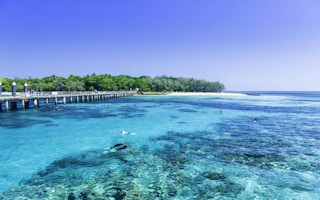More than half of all corals on the Great Barrier Reef are dying as unprecedented mass bleaching spreads across Australia’s coral reefs.
That’s the verdict of University of Queensland Global Change Institute Director Professor Ove Hoegh-Guldberg, who has studied the impact of climate change on coral for more than three decades.
“From the tip of Cape York to the Whitsundays, the Great Barrier Reef in the east to the Kimberley’s in the west and Sydney Harbour in the south, Australia’s corals are bleaching like never before,” Professor Hoegh-Guldberg said.
“This is the worst coral bleaching episode in Australia’s history, with reports of coral dying in places that we thought would be protected from rising temperatures.”
A Great Barrier Reef survey coordinated by the ARC Centre for Excellence for Coral Reef Studies has revealed that all but a tiny section of the reef has been affected.
Coral expert Dr Tyrone Ridgway said the frequency of bleaching events over the past 20 years was reducing the recovery time and weakening the corals’ ability to bounce back.
“Previously, scientists thought the reefs off Western Australian could withstand bleaching and that southern waters around Sydney would be too cool for bleaching — this year has shown that is not the case,” Dr Ridgway said.
“It will already take several decades for coral reefs to recover from this bleaching event.
“If we have another harsh summer or a serious cyclone, it will set the clock back even further.”
Professor Hoegh-Guldberg, who appears in Sir David Attenborough’s documentary Great Barrier Reef on ABC Television on Sunday night, said coral reefs brought tourism and aquaculture, which in turn employed more than 69,000 Australians and generated more than $5 billion for the Australian economy each year.
“Similarly to issues such as defence, we need bipartisan support to meet our environmental responsibilities to reduce greenhouse gas emissions and in turn reduce the impacts of future bleaching events on our precious coral reefs,” Professor Hoegh-Guldberg said.
“We still have time to turn this problem around but implementing deep cuts in CO2 emissions must start today.”








